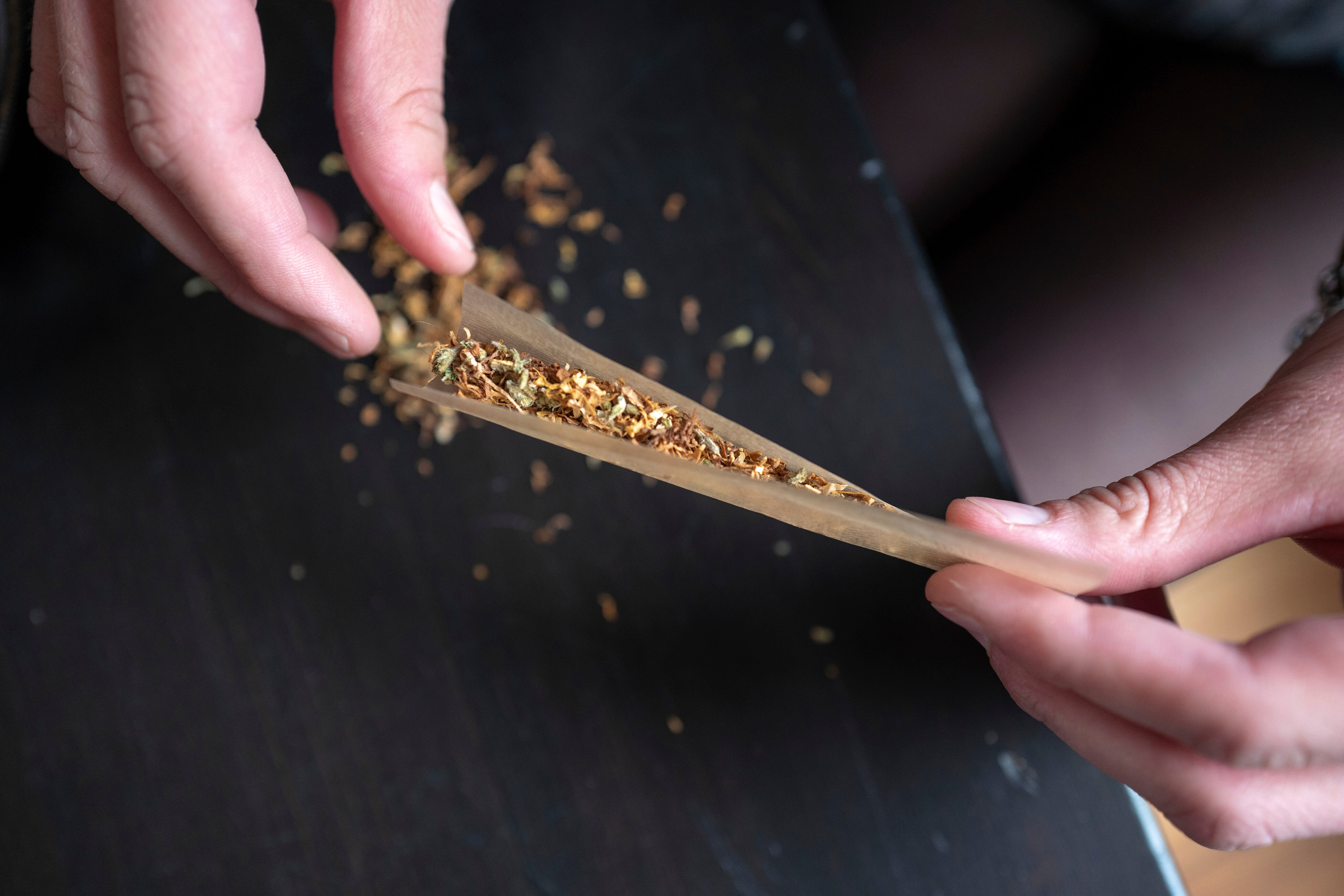Achieving slow-burning rolling papers requires mastering three key elements: selecting premium paper, employing proper rolling technique, and maintaining optimal environmental conditions. Slow-burning rolling paper mastery combines the selection of hemp or rice paper, controlled packing density, and 60-70% humidity levels to create sessions lasting 50-100% longer than standard papers.
Whether you're dealing with papers that burn too quickly or want to maximize your material efficiency, these techniques will transform your rolling game. From understanding rolling paper materials and performance factors to advanced optimization strategies, you'll discover practical methods that deliver consistent, long-lasting results.
Understanding What Makes Rolling Papers Burn Slowly
Slow-burning papers depend on four factors: paper thickness (12-14 gsm weight optimal), material porosity, fiber density, and oxygen flow restriction. Ultra-thin papers (12-13 gsm) burn 25-40% slower than thick papers (18-20 gsm) because they contain less combustible material per square millimeter.
Low-porosity papers restrict oxygen flow by 30-50%, creating controlled combustion that extends burn time. High-porosity papers allow too much oxygen, leading to faster burns that waste material.
Material Types and Performance
Rice rolling papers provide the slowest burn rates, extending sessions 50-70% longer than wood pulp papers through ultra-thin construction (12-13 gsm) and controlled porosity. They offer complete flavor neutrality and work well with premium materials.
Hemp rolling papers strike a balance between sustainability and performance, lasting 30-45% longer than those made from wood pulp while offering superior tear resistance. Their natural strength enables thinner construction while maintaining structural integrity during the rolling process.
Bamboo papers combine eco-friendliness with reliable burn control and minimal ash production. The fibrous structure creates excellent burn rate management throughout extended sessions.
Cellulose papers offer transparent options with exceptional slow-burning properties. Made from plant-based films, they burn very slowly while providing visual appeal that lets users monitor material consumption.
Choosing the Right Slow-Burning Papers
Select papers based on material type, thickness specification, porosity level, and quality standards. Premium papers maintain consistent 12-14 gsm thickness with less than 0.5 gsm variation across packages.
Look for natural material sourcing with unbleached processing and chemical-free manufacturing. Established manufacturers provide more reliable performance than unknown brands.
Check the packaging for specific slow-burning mentions, material specifications, and manufacturing location as indicators of quality. Combining these quality indicators with optimal paper thickness selection ensures you get the best performance from your chosen materials. These factors become important for the storage methods covered below.
Essential Rolling Techniques for Extended Sessions
Proper rolling technique transforms premium papers into consistently slow-burning sessions through systematic preparation and execution.
Herb Preparation Methods
Grind to medium-fine texture (2-3mm particles) for optimal airflow without material loss through ultra-thin papers. Over-grinding creates powder that burns too quickly; under-grinding leaves pieces that burn unevenly.
Maintain optimal moisture content of 10-15%. Material with a content below 8% burns too rapidly; above 18% requires frequent relighting. Allow slightly moist material to air-dry briefly before rolling.
Distribute material evenly with slightly more toward the center, tapering 20% toward the ends. This promotes steady burning from tip to filter throughout extended sessions.
Advanced Rolling Techniques
Use gentle, controlled movements to preserve the integrity of the paper. Maintain moderate rolling tension that shapes without restricting airflow - excessive pressure creates uneven combustion.
Apply moisture sparingly to adhesive strips for secure bonds without over-wetting. Allow sealed joints to settle before lighting.
Pack the open end with gentle, consistent pressure to create uniform density without compressed areas that resist airflow. This technique works with the environmental factors discussed in our storage section.
Handling Ultra-Thin Papers Without Damage
Ultra-thin papers (12-13 gsm weight) require specific conditions to prevent tearing. Maintain workspace humidity between 50-60%. Below 40% causes brittleness, while above 70% makes papers limp and difficult to work with.
Use smooth, non-porous work surfaces with proper lighting. Arrange materials within easy reach to minimize handling time with delicate papers.
Apply fingertip pressure rather than fingernails. Use two-handed coordination with smooth, deliberate movements. Practice light touch techniques with less valuable papers first before working with premium, slow-burning materials.
Optimizing Burn Performance Through Accessories
Quality accessories multiply the benefits achieved through premium paper selection and refined rolling technique.
Grinder Selection
Sharp grinder teeth create uniform 2-3mm particles essential for slow-burning papers. Dull grinders produce inconsistent textures, causing uneven burning. Metal grinders provide sharper, more durable cutting surfaces than plastic alternatives.
Use light pressure with steady rotation for optimal consistency. Aggressive grinding creates powder that burns too quickly for extended sessions.
Filter Optimization
The optimal filter size measures 6-8mm in diameter, providing structural support while maintaining adequate airflow for sessions lasting 50-100% longer. Oversized filters restrict airflow; undersized filters provide insufficient support.
Use business card stock or specialized filter papers that maintain shape while allowing adequate airflow. Position filters to extend slightly beyond the paper edge while maintaining secure contact with the paper.
Test airflow before lighting. A gentle draw should provide smooth, unrestricted flow.
Equipment Maintenance and Care
Proper maintenance of your rolling accessories ensures consistent performance, extends equipment lifespan, and protects your investment in premium slow-burning papers.
Grinder Maintenance
Clean grinder teeth weekly to maintain sharp cutting edges that produce uniform particle consistency. Use a small brush to remove accumulated residue from teeth and threading. Sticky buildup dulls cutting surfaces and creates uneven grinding, which undermines the slow-burning performance of paper.
Replace grinder components when teeth show visible wear or produce inconsistent particle sizes. Quality metal grinders typically last 12-18 months with regular use before requiring replacement or professional sharpening.
Store grinders in dry locations to prevent corrosion, which can affect cutting precision. Avoid exposure to extreme temperatures that can cause metal expansion and threading issues.
Rolling Tray and Surface Care
Maintain clean, smooth rolling surfaces to prevent contamination and paper damage. Glass or smooth wooden surfaces should be cleaned with alcohol wipes between uses to remove oils and residue that can affect the handling of ultra-thin paper.
Inspect rolling trays for scratches or rough spots that can catch delicate papers. Replace or refinish surfaces showing wear that interfere with smooth paper handling techniques, as covered in our rolling section.
Storage Container Maintenance
Check storage containers monthly for seal integrity and humidity control effectiveness. Replace containers that show cracks or damaged seals, which compromise the environmental protection essential for preserving slow-burning paper.
Clean storage containers quarterly with dry cloths to remove dust and prevent contamination. Avoid using chemical cleaners that can leave residues, which can affect paper quality.
Storage and Preservation Tips
Proper storage maintains the paper characteristics that enable slow-burning performance, preserving thickness, porosity, and moisture levels essential for consistent results.
Store papers in sealed containers to prevent exposure to environmental elements. Maintain stable temperatures between 65°F and 75°F, and avoid locations with significant temperature fluctuations. Use dark locations or opaque containers to prevent light-induced deterioration.
Monitor stored papers for brittleness, discoloration, or moisture damage that indicates compromised slow-burning properties. Rotate stock to use older papers first.
These storage methods support the handling techniques covered above while maintaining paper quality for extended periods.
Regional and Climate Considerations
Different geographic locations and seasonal conditions require specific adjustments to slow-burning paper selection and handling techniques for optimal performance.
Humid Climate Adaptations
High-humidity regions (with an average humidity above 70%) require modified storage approaches to prevent paper degradation and handling difficulties. Use desiccant packets in storage containers to maintain optimal internal humidity levels between 50% and 60%.
Choose slightly thicker papers (13-14 gsm) in consistently humid climates as they resist moisture absorption better than ultra-thin alternatives. Rice and hemp papers perform more reliably than cellulose papers in high-humidity environments.
Reduce material moisture content to 8-10% in humid climates to compensate for environmental moisture absorption during rolling and storage. Monitor papers for limpness or difficulty handling that indicates excessive moisture exposure.
Dry Climate Modifications
Low-humidity environments (below 40%) require increased moisture protection to prevent paper brittleness and tearing during handling and storage. Store papers with slightly higher humidity levels in sealed containers using small moisture sources.
Ultra-thin papers (12-13 gsm) work well in dry climates but require careful handling due to increased brittleness. Work in areas with humidifiers or during naturally higher humidity periods, like early morning.
Increase material moisture content to 12-15% in dry environments to maintain optimal burning characteristics. Papers may require brief rehumidification if they become too dry for proper rolling technique.
Seasonal Adjustments
Winter heating systems significantly reduce indoor humidity, requiring increased moisture protection and modified rolling techniques. Monitor papers for seasonal brittleness and adjust storage humidity accordingly.
Summer humidity increases may require increased desiccant use and modified storage locations to avoid temperature fluctuations. Air conditioning systems can create rapid humidity changes that stress paper fibers, potentially causing damage.
Spring and fall provide optimal conditions for slow-burning paper performance in most regions. Use stable seasons to establish technique and evaluate paper performance without environmental complications.
Troubleshooting Common Issues
Even with optimal paper selection and proper technique, common issues can undermine slow-burning performance.
Fixing Uneven Burn Patterns
Uneven material distribution is the cause of 70% of slow-burning problems. Concentrate slightly more material toward the center, tapering 20% toward the ends for optimal consistency. This applies the preparation methods from our rolling section.
Maintain a consistent moisture content of 10-15% throughout the material. Variations exceeding 5% cause irregular burning patterns that waste the slow-burning advantages you selected papers for.
Check packing density and filter construction if problems persist. Review rolling tension and sealing methods for uniform construction.
Preventing Frequent Relighting
Check airflow - overpacked material or oversized filters commonly cause relighting problems. Slightly dry material burns more consistently than overly moist material.
Avoid problematic environmental conditions, such as wind or extreme humidity. Use a proper lighting technique that establishes even burning across the entire tip.
Apply the environmental optimization strategies from our storage section to actual sessions, choosing stable conditions that support controlled combustion.
Common Mistakes and How to Avoid Them
Understanding frequent errors helps prevent problems that undermine slow-burning paper performance before they occur.
Material Preparation Mistakes
Over-grinding material into powder creates fast-burning particles that waste the slow-burning paper's advantages. Stop grinding when particles reach a 2-3mm consistency rather than continuing to fine powder. Test grind texture by examining particles under good lighting before rolling.
Using material with inconsistent moisture levels causes irregular burning patterns. Check the moisture content by gently pressing the material between your fingers. Properly prepared material should feel slightly springy without being wet or brittle.
Rushing the drying process with heat sources damages the material structure and creates uneven burning. Allow material to air-dry naturally at room temperature for optimal moisture balance.
Rolling Technique Errors
Applying excessive rolling pressure tears ultra-thin papers and creates compressed areas that resist airflow. Practice gentle pressure techniques with inexpensive papers before working with premium slow-burning materials.
Over-wetting adhesive strips can weaken the paper structure and lead to sealing failures. Use minimal moisture - tongue tip contact for 1-2 seconds provides adequate adhesive activation without compromising paper integrity.
Packing material that is too tightly restricted restricts airflow and prevents controlled combustion, which makes slow-burning papers effective. Aim for uniform density that allows gentle airflow testing before lighting.
Environmental and Storage Mistakes
Working in low-humidity conditions with a relative humidity below 40% makes ultra-thin papers brittle and prone to tearing. Monitor workspace humidity and adjust conditions or timing to maintain humidity levels between 50-60% during rolling sessions.
Storing papers in unsealed containers exposes them to humidity fluctuations, which compromise their slow-burning properties. Use airtight storage containers with stable internal environments as detailed in our storage section.
Ignoring temperature extremes during storage or use can affect the flexibility and handling characteristics of paper. Maintain moderate temperatures and avoid rapid temperature changes that stress paper fibers.
Cost-Effectiveness and Value Optimization
Premium slow-burning papers cost 200-300% more than basic papers but extend sessions 50-100% longer, providing 25-50% better cost-per-minute value.
Calculate cost per session rather than cost per paper. Material efficiency improvements often offset higher paper costs entirely through reduced waste and more complete utilization.
Buy larger quantities of proven performers rather than experimenting with small packages. Plan sessions during stable weather with 50-65% humidity for optimal performance, maximizing your investment.
Advanced Tips for Perfect Extended Sessions
Expert-level optimization techniques can further enhance slow-burning performance for users who want to master every aspect of extended sessions.
Optimal Environmental Timing
Optimal session timing occurs during stable weather conditions with 50-65% humidity and minimal wind, as environmental factors can reduce the performance of slow-burning paper by 20-30%. Plan sessions during stable weather periods when conditions support the paper characteristics we optimized for.
Pre-Rolling Preparation
Pre-rolling preparation techniques optimize material condition and workspace setup. Allow materials to reach optimal moisture levels and temperature before beginning. Set up your workspace systematically to minimize handling time and reduce the likelihood of errors with delicate papers.
Quality Accessories for Advanced Users
Quality accessories make significant differences in advanced applications. Professional-grade grinders, rolling trays, and storage solutions provide the precision and consistency that expert-level slow-burning requires.
Session Planning Strategies
Session planning strategies maximize the benefits of slow-burning papers. Plan sufficient time to enjoy extended sessions fully, and prepare backup materials in case of unexpected issues.
Pre-Rolled Convenience Options
For users seeking convenience without sacrificing the benefits of slow-burning options, pre-rolled alternatives offer professional-quality solutions. Companies like Futurola provide various sizes and materials optimized for extended sessions, allowing you to enjoy slow-burning benefits without advanced rolling expertise.
Mastering Your Slow-Burning Rolling Paper Experience
Success with slow-burning papers hinges on the combination of high-quality materials, proper technique, and environmental awareness. Begin with reputable papers that suit your experience level and master basic techniques before advancing to ultra-thin materials.
Invest in quality accessories and rolling papers that support technique development and optimize performance. Consistency comes through practice and attention to material preparation, rolling technique, and environmental factors.
The integration of paper selection, rolling methods, and environmental control creates the foundation for extended sessions that maximize both material efficiency and session satisfaction. At Futurola, we understand this holistic approach and provide papers designed to support slow-burning performance across all skill levels. Focus on mastering one aspect at a time for steady improvement and reliable results.





LEAVE A COMMENT
All comments are moderated before being published.
This site is protected by hCaptcha and the hCaptcha Privacy Policy and Terms of Service apply.